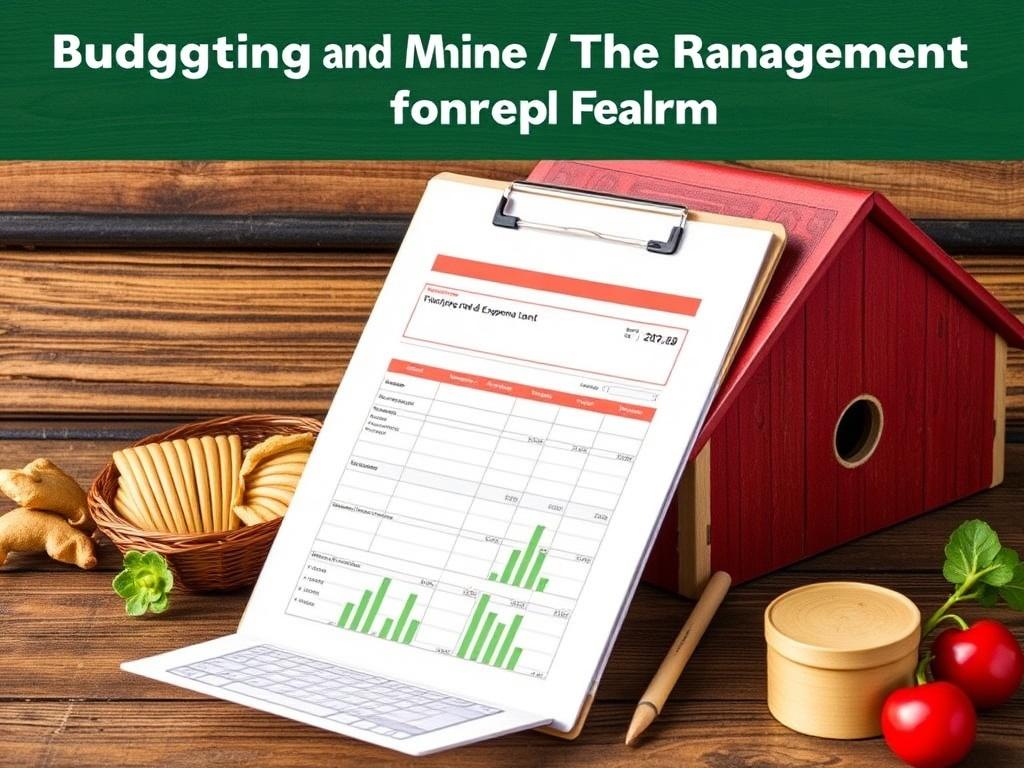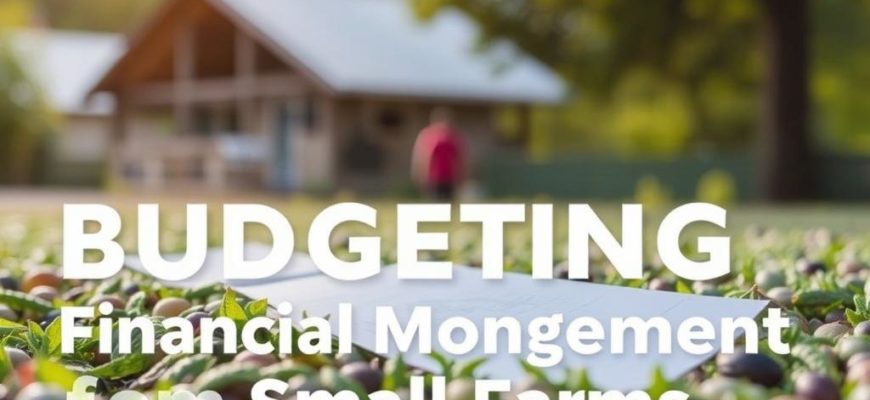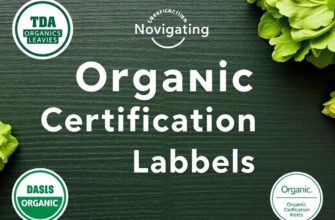Международное название:
Синонимы:
Характеристики:
| Сложность: | |
| Цикл развития: | |
| Световой режим: | |
| Режим полива: | |
| Температура: | |
| Почва: | |
| Ключевая черта: |
Цвет листвы
Цвет бутонов
Размеры цветка
Систематика:
| Домен: | |
| Царство: | |
| Отдел: | |
| Класс: | |
| Порядок: | |
| Семейство: | |
| Род: |
Farming is a business, a lifestyle and a labor of love all at once. Whether you manage a few acres of vegetables, a mixed livestock operation, or a specialized niche like heritage poultry or cut flowers, your success depends as much on numbers as it does on soil, animals and weather. Yet many small farmers feel uncomfortable with budgeting and financial planning. That unease is understandable: the rhythms of farming are seasonal, incomes are uneven, and unexpected costs pop up like weeds. The good news is that with a few straightforward tools, a little planning and a practical mindset, you can take control of your farm’s finances and make decisions that reduce stress and improve profitability.
In this guide I’ll walk you through budgeting, cash flow management, pricing, record keeping, access to finance and practical ways to build resilience. I’ll use simple language, concrete examples and tables you can adapt, and I’ll show how to turn messy receipts and seasonal ups and downs into a clear plan you can follow. Think of this as the handbook you return to each season — not a complicated textbook, but a farmer-friendly roadmap for building a financially healthy small farm.
- Why Financial Management Matters for Small Farms
- Getting Started: Setting Goals and Understanding Your Farm’s Finances
- Key financial documents you should begin with
- Creating a simple farm budget
- Fixed vs Variable Costs
- Tracking Income and Expenses
- Methods for tracking
- Simple categories and a naming system
- Cash Flow Management: Keeping the Farm Running Through the Year
- Strategies to manage seasonal cash flow
- Example of a simple monthly cash flow snapshot
- Pricing Your Products and Enterprises
- Break-even and profit margin basics
- Value-based pricing and market considerations
- Managing Risk and Building Reserves
- Steps to build financial resilience
- Access to Finance: Loans, Grants and Alternative Funding
- Comparing common financing options
- Tips for loan applications
- Record Keeping and Compliance
- What records to keep and how long
- Tools and Templates to Make Life Easier
- Free and low-cost spreadsheet templates
- Building a Simple Farm Financial Plan
- Step-by-step plan creation
- Checklist for annual financial review
- Case Study: A Small Vegetable Farm Budget and Cash Flow Example
- Monthly cash flow snippet for the same farm
- Practical Tips to Save Money and Increase Revenue
- When to Hire an Accountant or Financial Advisor
- How to work effectively with an advisor
- Frequently asked questions farmers ask about finances
- Next Steps: Making This Practical on Your Farm
- Conclusion
Why Financial Management Matters for Small Farms
Good financial management gives you choices. It helps you decide whether to invest in a new hoop house, hire seasonal help, try a new market, or pay down debt. Without a budget or cash flow plan, decisions become guesses. You might see a busy week of sales and assume the season is profitable, only to discover that bills and loan payments still exceed your income. Sound bookkeeping and budgeting turn guesswork into information.
Another reason is risk mitigation. Farming is full of risks — weather, pests, market shifts, supply chain hiccups. A clear financial picture helps you weather bad years without panic. When you know your break-even points, have a reserve for emergencies and understand where your money goes each month, you make choices that reduce the chance that one setback becomes a crisis. Finally, lenders, grant programs and partners often require financial statements, budgets and projections. Having these documents ready opens doors to funding that can expand your operation.
Getting Started: Setting Goals and Understanding Your Farm’s Finances
Start with goals. What do you want your farm to achieve in the next year, three years and five years? Goals can be simple: increase net income by 20% next year, reduce off-farm work hours by half, or expand into a new farmers market. Clear goals guide your budgeting decisions. They help you prioritize spending and investment.
Next, inventory what you already have. That means physical assets — land, buildings, equipment — and financial realities like current debt, cash on hand and recurring monthly expenses. Take time to list your enterprises (e.g., greens, tomatoes, eggs) and estimate their revenue and costs. Don’t worry about perfection yet; an honest, approximate starting point is better than none. Once you have this baseline you can create a budget and track it over time.
Key financial documents you should begin with
Begin with three core documents: a simple cash flow forecast, an income and expense statement, and a balance sheet. They sound technical but are quite practical.
The cash flow forecast shows when cash will come in and when it will go out over the year — essential on farms with strong seasonality. The income and expense statement (sometimes called a profit and loss) summarizes how much you earned and spent during a period. The balance sheet lists what you own (assets) and what you owe (liabilities), showing your net worth.
These documents can be as simple as spreadsheets. The important part is to update them regularly.
Creating a simple farm budget
A budget is your plan for income and expenses. Start by listing expected revenues by enterprise and expected expenses by category. Keep categories simple at first: seed and feed, labor (including yourself), equipment maintenance, utilities, insurance, marketing and packaging, rent/lease or mortgage, and loan payments.
Here’s a straightforward way to structure a yearly budget. Use this as a template and adapt to your farm.
| Category | Monthly Estimate | Annual Estimate |
|---|---|---|
| Sales — Vegetables | $1,200 | $14,400 |
| Sales — Eggs | $300 | $3,600 |
| Total Sales | $1,500 | $18,000 |
| Seed & Fertilizer | $150 | $1,800 |
| Feed | $80 | $960 |
| Labor (hired) | $400 | $4,800 |
| Fuel & Maintenance | $120 | $1,440 |
| Marketing & Packaging | $100 | $1,200 |
| Rent/Mortgage | $600 | $7,200 |
| Insurance | $75 | $900 |
| Loan Payments | $200 | $2,400 |
| Total Expenses | $1,925 | $23,700 |
| Net (Sales – Expenses) | – $425 | – $5,700 |
This simple example shows how easy it is to discover a shortfall. The purpose of the budget is to reveal this gap early so you can find ways to increase revenue, reduce costs, or change timing.
Fixed vs Variable Costs
One useful budget distinction is fixed versus variable costs. Fixed costs don’t change much with production levels — mortgage or lease, insurance, property taxes. Variable costs move with production — seed, feed, hourly labor, packaging. Understanding this split helps in decisions like whether expanding production will improve profitability or just add variable costs without enough sales.
- Fixed costs: insurance, land payments, machinery depreciation, permanent infrastructure.
- Variable costs: seed, fertilizers, seasonal labor, market fees, fuel for machinery during harvest.
- Semi-variable costs: items with a base amount plus per-unit costs, such as utility bills or repair budgets.
Tracking Income and Expenses

Tracking is where the real change happens. A budget without tracking is a map without a compass. Start with a system that you can maintain consistently. Many farmers use a mix of receipts, a shoebox of invoices, and sporadic spreadsheets — and while that can work short-term, a small, regular habit dramatically improves clarity.
Pick a weekly or bi-weekly time to enter transactions. If you wait months, the backlog becomes daunting and mistakes creep in. Make it as painless as possible: use smartphone apps to scan receipts, simple spreadsheets with categorized columns, or farm-specific accounting software.
Methods for tracking
Here’s a quick comparison of common tracking methods to help you choose.
| Method | Pros | Cons | Typical Cost |
|---|---|---|---|
| Paper ledger | Simple, inexpensive, tangible | Hard to analyze, prone to errors | Low |
| Spreadsheet (Excel/Google Sheets) | Flexible, free or low cost, good for custom budgets | Requires some setup, manual data entry | Low |
| Accounting software (QuickBooks, Xero) | Automates reconciliation, invoicing, reports | Monthly fee, learning curve | Medium |
| Farm-specific packages (FarmBooks, Farmbrite) | Designed for seasonal farms, enterprise tracking | May be costly, feature set varies | Medium to High |
| Bookkeeper or accountant | Professional, time-saving, accurate | Costly, less direct control | High |
Many successful small farmers combine a spreadsheet for budgeting and forecasting with occasional accountant reviews for taxes and complex decisions.
Simple categories and a naming system
Create consistent categories for sales and expenses, and stick with them. For incomes: Farmers Market – Veg, CSAs, Wholesale, Eggs, Value-added sales. For expenses: Seed, Feed, Labor, Utilities, Repairs, Packaging, Loan Payments, Insurance, Property Taxes. Consistency allows you to trend each category across seasons.
Cash Flow Management: Keeping the Farm Running Through the Year
Cash flow is the heartbeat of a farm. Even profitable farms can fail if cash inflows and outflows don’t match. Farms often earn most revenue during a few months but have expenses year-round. Managing this mismatch is the essence of cash flow planning.
Start with a monthly cash flow forecast. List cash coming in each month and cash going out. Include loan payments, taxes, payroll, and regular operating expenses. Identify months with negative cash flow and plan tactics to bridge them before trouble arrives.
Strategies to manage seasonal cash flow
Use a mix of these strategies:
- Smoothing sales: Offer winter stores, preserved goods, or CSA add-ons to bring income into slow months.
- Staggered crops: Planting a mix of early, mid and late-season crops spreads revenue.
- Short-term credit: A farm line of credit or short-term loan can cover temporary gaps — use sparingly and with a plan.
- Advance payments: Offer customers subscriptions, deposits or pre-sales for high-demand products.
- Cost shifting: Negotiate supplier terms, pay annual bills monthly or apply for lower payment frequency.
Example of a simple monthly cash flow snapshot
| Month | Cash In | Cash Out | Net |
|---|---|---|---|
| January | $1,000 | $3,200 | – $2,200 |
| April | $5,000 | $2,500 | $2,500 |
| July | $7,500 | $3,000 | $4,500 |
| October | $6,000 | $3,200 | $2,800 |
| December | $1,200 | $3,000 | – $1,800 |
When you see months with large deficits, seek ways to move income or reduce costs in those months. For instance, offer winter shares or build a schedule to buy inputs cheaper during off-season and store them.
Pricing Your Products and Enterprises
Pricing is both art and science. It must cover costs, reflect value, and be acceptable to customers. Start with cost-based pricing: know your cost per unit of product, then add a margin that covers overhead and profit.
A simple approach: determine all costs (fixed + variable) allocated per unit, then add the desired profit. For produce, calculate cost per pound or per unit. For eggs, cost per dozen. For CSA shares, total cost per season divided by the number of shares.
Break-even and profit margin basics
Break-even point is when revenue equals costs. Knowing break-even tells you how many units you must sell. Here’s an example for a simple product:
| Item | Amount |
|---|---|
| Fixed costs (annual) | $10,000 |
| Variable cost per unit | $2.50 |
| Price per unit | $6.00 |
| Contribution margin per unit (Price – Variable) | $3.50 |
| Break-even units (Fixed / Contribution) | 2,857 units |
Charge enough to cover variable costs and contribute to fixed costs. If your market won’t bear the price you need, you must lower costs, add value, or find better markets.
Value-based pricing and market considerations
Value-based pricing looks at what customers are willing to pay. For example, a community-supported agriculture (CSA) share often commands higher prices because of convenience, freshness and story. Specialty crops, certified organic produce or heritage breeds can be priced above commodity levels. Always test prices with customers and watch sales response.
Managing Risk and Building Reserves
Resilience is a financial strategy. A reserve fund for emergencies, insurance and diversification of income reduce vulnerability. Aim to build a cash reserve that covers several months of operating expenses — the exact amount depends on your risk tolerance, seasonality and debt load.
Insurance options vary by country and region, but common policies include property, liability, crop insurance, and livestock mortality insurance. While insurance costs money, it may save your operation in catastrophic events.
Steps to build financial resilience
- Create an emergency fund: aim for 3–6 months of operating expenses as a starting point.
- Diversify income: combine markets, add value (jams, pickles) or agri-tourism to smooth cash flow.
- Document and model risks: what would a late frost cost you? What about a disease outbreak?
- Use forward contracts or pre-sales where possible to guarantee a baseline of income.
- Review insurance options and choose appropriate coverage for your primary risks.
Access to Finance: Loans, Grants and Alternative Funding
Many small farms need outside capital for equipment, infrastructure or transitions like adding a greenhouse. Options include traditional bank loans, farm credit institutions, microloans, grants, lease financing, and crowdfunding. Each has pros and cons.
Banks often require financial statements, collateral and a strong credit history. Farm credit institutions may be more accommodating to agricultural cycles. Grants are attractive because they don’t require repayment, but are competitive and often come with specific use requirements. Crowdfunding can provide seed money for a specific project and build customer interest.
Comparing common financing options
| Type | When it fits | Pros | Cons |
|---|---|---|---|
| Traditional bank loan | Large asset purchases, established operations | Lower interest, structured terms | Needs collateral, paperwork, longer approval |
| Farm credit/USDA loans (or regional equivalents) | Agricultural projects, young farmer programs | Tailored to agriculture, flexible | May require specific criteria, moderate processing |
| Microloan | Small capital amounts, early-stage projects | Easier access, quick | Higher interest, short terms |
| Grants | Specific projects like conservation or value-added | No repayment | Competitive, limited funds |
| Crowdfunding | Community-backed projects, marketing angle | Raises funds and builds audience | Requires campaign work, uncertain |
Tips for loan applications
When you apply for credit, prepare: a clear budget and cash flow forecast, a business plan or project plan, recent financial statements, and a realistic repayment plan. Lenders want to see that you understand numbers and risks and have contingency plans.
Record Keeping and Compliance
Good records make taxes and compliance easier, and they support better decisions. Keep receipts, invoices, payroll records, loan documents, and tax filings. Store them in an organized way — digital copies backed up off-site are safest.
Tax rules vary widely, but common farm-related items include eligible deductions for inputs, depreciation schedules for equipment, and different handling for inventory and income recognition. Consult a tax professional with farming experience to make sure you take all permissible deductions and maintain required records.
What records to keep and how long
- Income records: sales receipts, sales logs, market summaries — keep at least 3–7 years depending on jurisdiction.
- Expense records: invoices, receipts, supplier contracts — similar retention period.
- Payroll: timesheets, payroll tax filings — longer retention for legal compliance.
- Loan documents: loan agreements, payment histories — keep for life of the loan and a few years after payoff.
- Insurance and legal documents: policies, claims, permits — keep indefinitely.
Tools and Templates to Make Life Easier
You don’t need fancy software to start — a well-structured spreadsheet can be powerful. But as operations grow, some tools can save time and give clearer insights.
Here are common tools and why farmers like them:
- Spreadsheets (Excel/Google Sheets): customizable budgets, cash flow forecasts, and enterprise budgets.
- Accounting software (QuickBooks, Xero): transactions, reconciliation, payroll and reports.
- Farm management platforms (Farmbrite, CropTracker): track planting, harvest, field activities and link to finances.
- Mobile receipt apps (Expensify, Receipt Bank): scan and store receipts to reduce paperwork.
- Templates and checklists: simple P&L templates, monthly cash flow templates and inventory lists to standardize records.
Free and low-cost spreadsheet templates
If you like spreadsheets, create templates for:
- Monthly cash flow forecast (12 columns for months, rows for categories).
- Enterprise budget (costs per unit and revenue per unit).
- Annual operating budget (income and expenses by category).
- Fixed asset register (purchase, date, cost, depreciation).
Save time by copying templates and adjusting for each season or new enterprise.
Building a Simple Farm Financial Plan
A financial plan aligns your goals with numbers. It doesn’t need to be complex. A one-page financial plan can be sufficient: list your mission, top three financial goals for the coming year, key assumptions (sales volumes and prices), budget highlights, and contingency plans.
Review and update the plan seasonally. Farming changes with markets and weather; a plan should be a living document you consult and adjust.
Step-by-step plan creation
- Define clear goals for the year (revenue target, investment, debt reduction).
- Compile baseline numbers: last year’s income, expenses, and net income.
- Create enterprise projections: expected yield, price, and sales channels for each product.
- Make a monthly cash flow forecast to identify gaps.
- Decide on actions: price changes, cost cuts, new markets, or financing to cover shortfalls.
- Set review checkpoints: monthly bookkeeping review, quarterly budget check.
Checklist for annual financial review
- Compare actual results to budget and note variances.
- Analyze high-cost areas for possible savings.
- Review product pricing and market performance.
- Assess debt levels and repayment plans.
- Plan investments for the coming year and model their impact.
Case Study: A Small Vegetable Farm Budget and Cash Flow Example
Seeing numbers in context makes decisions easier. Imagine a small 2-acre vegetable farm selling through a CSA, two farmers markets and a small wholesale account. This simplified example shows how budgeting surfaces decisions.
| Item | Annual Amount |
|---|---|
| CSA revenue (50 shares x $600) | $30,000 |
| Farmers markets & wholesale | $18,000 |
| Total Sales | $48,000 |
| Seed and plants | $3,200 |
| Soil amendments & supplies | $2,000 |
| Labor (2 seasonal workers + owner labor value) | $20,000 |
| Marketing & markets | $1,800 |
| Fuel & equipment maintenance | $2,200 |
| Insurance and licenses | $1,500 |
| Rent/Mortgage | $6,000 |
| Other overhead | $1,500 |
| Total Expenses | $38,200 |
| Net Operating Income | $9,800 |
At first glance the farm looks profitable. But adding loan payments of $4,500 annually and setting aside $3,000 for equipment replacement drops net to $2,300. That small margin could be eroded by a bad season. This example highlights why reserves and careful planning matter.
Monthly cash flow snippet for the same farm
| Month | Projected Cash In | Projected Cash Out | Net |
|---|---|---|---|
| January | $1,200 (CSA payments) | $3,500 | – $2,300 |
| April | $5,000 | $4,000 | $1,000 |
| July | $8,500 | $3,200 | $5,300 |
| October | $6,000 | $3,000 | $3,000 |
The months with strong positive balances cover earlier deficits if the cash flow is managed. If not, the operation could need short-term financing in winter months. Planning ahead — such as offering early-bird CSA discounts paid in January or February — can reduce winter cash shortfalls.
Practical Tips to Save Money and Increase Revenue

Small farmers often find meaningful savings and revenue increases from small changes. Here are practical ideas that are often overlooked.
- Negotiate with suppliers for bulk or off-season discounts on seed, feed and supplies.
- Track fuel and maintenance closely — a small regular maintenance routine prevents big breakdown expenses.
- Reduce packaging costs by buying in bulk and designing minimal but attractive packaging.
- Increase average sale per customer: bundle items, offer recipe kits, or add value-added products.
- Host on-farm events or workshops in off-season months to generate income and deepen customer relationships.
- Leverage social media and email newsletters to announce surplus sales, pre-orders, or special offers.
- Share equipment with neighboring farms or join a cooperative to spread capital costs.
When to Hire an Accountant or Financial Advisor

You can do much of this work yourself, but an accountant or advisor can save time and money. Hire someone when:
- Your bookkeeping is behind or you face tax complications.
- You’re applying for large loans or planning a major investment.
- You want professional advice on tax strategies, succession planning, or farm business structure.
- You prefer to focus on production and leave finances to a trusted professional.
A good advisor will help you interpret financial statements, set realistic budgets, and plan taxes. They can also suggest ways to reduce tax liabilities and advise on insurance and legal structure.
How to work effectively with an advisor
Prepare clean, organized records before meetings. Bring your budget, cash flow forecast, and any questions about upcoming investments. Be open about goals and constraints. This makes meetings productive and keeps advisory fees focused on generating value.
Frequently asked questions farmers ask about finances
Many farmers ask similar questions: How much should I pay myself? Should I take an off-farm job? When is it time to expand? There are no one-size-fits-all answers, but a few guiding principles help.
- Pay yourself a living wage as soon as possible; reinvesting everything while you cannot meet basic needs is not sustainable long-term.
- Off-farm work can be a smart short-term strategy to provide stable cash while you grow. Be careful, though — time away from the farm slows development.
- Expand when you have clear evidence of market demand and a cash flow plan that includes unexpected costs.
Next Steps: Making This Practical on Your Farm
Pick one or two actions this week. Maybe set up a simple monthly cash flow spreadsheet, or spend one hour categorizing last month’s receipts. Schedule a weekly bookkeeping hour and a monthly review with a goal to make the process habitual. Small consistent steps create big long-term improvements.
If you’re new to budgeting, start by creating a one-page budget and a 12-month cash flow. If you’re strapped for time, begin with automated bank feeds into a simple accounting package or hire a part-time bookkeeper for a few hours a month. The goal is to make financial information timely and useful rather than a chore you avoid.
Conclusion
Budgeting and financial management for small farms doesn’t have to be complicated — it requires consistent tracking, a clear budget, monthly cash flow planning, realistic pricing, and thoughtful risk management; with simple tools like spreadsheets, dedicated bookkeeping time and occasional professional help, you’ll gain the clarity to make decisions that grow your farm sustainably, protect you against the inevitable surprises, and give you the freedom to focus on the work you love.
Оценивайте статью, делитесь материалом с друзьями в социальных сетях, а также высказывайте свое мнение в обсуждении ниже! ![]()







